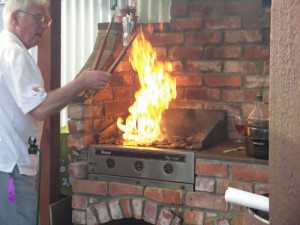 As ever we start our year with the BBQ at Derek’s Place on 27 January.
As ever we start our year with the BBQ at Derek’s Place on 27 January.
We’ll send more information to members in mid-January. As always we give special thanks to Derek Thompson for making his excellent facilities available.
 A great evening of Portuguese wines with food matches. The wines included:
A great evening of Portuguese wines with food matches. The wines included:
The food matches included:
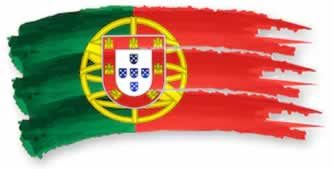 Pão Frite (Fried Bread)
Pão Frite (Fried Bread)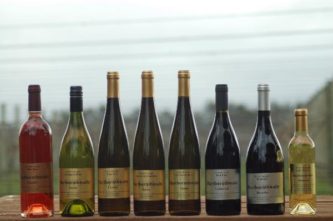 As I sit to prepare this newsletter Celine Dion is singing “Another year has gone by” in the background. Surely not, I say, but it is so. Where has it gone?
As I sit to prepare this newsletter Celine Dion is singing “Another year has gone by” in the background. Surely not, I say, but it is so. Where has it gone?
We can start by reviewing our year. We began with our summer BBQ at the end of January. The usual excellent occasion and thanks to Derek for continuing to make his premises available. February saw us heading on a “Summer Romance – a love affair with Wine” where some of your committee members presented their favourite summer wines. In March Mark and Susan Haythornthwaite presented some of their “Haythornthwaite” wines and told us of the success they have had adding platters to the tasting experience at their premises.
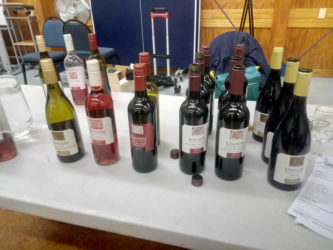
In April Simon Bell from MacVine took us on a tour of Europe embracing France, Italy and Germany. May was the usual AGM then in June Unison Vineyards from the Gimblett Gravels in Hawkes Bay presented some lovely wines. July was something of a disappointment when we went to Saigon Van Grill Bar. The meal was lacking, particularly in quantity, and subsequent efforts to redress the problem have been futile. Never mind, we were back on track in August with a great tasting from Clearview.
September saw a continuation with European wines when Maison Vauron gave us a taste of French wine with some cheese matches. Then who could forget Negociants presentation from that iconic Barossa winery, Yalumba.

The tastings for the year finished with a return to Europe, this time Portugal with Confidant Wines, and some great wine with food matches. All this travel and we haven’t had to leave home.
As I finish this Celine has moved on to “Holy Night” and is singing about a night divine. I can’t quite work out if she means Christmas Eve or the December Dinner at Juniper. You be the judge.
Cheers
Robin Semmens, Editor
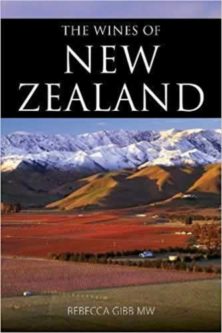
Rebecca Gibb MW- 3 August 2018
These words were uttered by the French-born English wine merchant and author André Simon in 1964 when tasting Hawke’s Bay winery Te Mata’s 1912 red blend. More than half a century after it was first made – the same year as the sinking of the Titanic – the red wine was still very much alive, so why has New Zealand not developed a reputation for making age worthy wines?
Two words: Sauvignon Blanc.
The New Zealand wine industry is dominated by a grape variety that is typically fermented and put into bottle within months – or even weeks – of being harvested. ‘Picked, pressed and pissed before Christmas’ is the life cycle of Sauvignon Blanc in some winemakers’ view. Why wait for Christmas when you can drink the wine before Easter? Moana Park winery has released a Sauvignon Blanc on April 1 and that was no April Fools. If the previous vintage has been small and stocks are running low, a few blocks might be picked early to produce a wine to bridge the gap between vintages, such as Villa Maria’s Early Release Sauvignon Blanc.
 However, there are a growing number of smaller, quality focused producers that are holding back their Sauvignon Blancs before releasing, giving them time on lees and time in bottle. Having tasted some of Marlborough’s finest Sauvignon Blancs at seven or eight years old, drinkers need not be in such a hurry. Putting the brakes on wineries releasing wines doesn’t help their cash flow and with grape growers to pay and bank repayments due, accountants can overrule winemakers, putting the onus on drinkers to put the wines in their usually non-existent cellars.
However, there are a growing number of smaller, quality focused producers that are holding back their Sauvignon Blancs before releasing, giving them time on lees and time in bottle. Having tasted some of Marlborough’s finest Sauvignon Blancs at seven or eight years old, drinkers need not be in such a hurry. Putting the brakes on wineries releasing wines doesn’t help their cash flow and with grape growers to pay and bank repayments due, accountants can overrule winemakers, putting the onus on drinkers to put the wines in their usually non-existent cellars.
It is partly a matter of wine culture: New Zealand does not have a long-standing tradition of making and drinking wine. Having rejected Prohibition in 1919, the country continued to operate under a cloud of abstemiousness, promoted by restrictive licensing laws. Until 1961, New Zealanders couldn’t enjoy a glass of wine with a meal in a restaurant. The 1960s brought licensing change with more and more restaurant licences granted, a rise in the number of wine shops while a rise in tax on beer and spirits in the 1958 ‘Black Budget’ gave wine an encouraging bump.
The 1950s witnessed the birth of aspirational winemakers and pioneers seeking to move away from fortified wine and hybrids to quality table wine made from vitis vinifera, which gained increasing momentum, culminating in legislation outlawing a sugar and water culture and a state-sponsored vine pull in the 1980s. In the 1970s, regular wine columns had appeared in several newspapers, catering for an educated population who had done their ‘OE’ (overseas experience), travelling around Europe, experiencing wine and food culture. From just 174ml of wine per capita in the early 1960s, wine consumption increased to 5.3 litres by the end of the 1970s. In 2016, the figure stood at 20.2 litres but has remained stagnant for a decade. (Come on team, get drinking, we have to lift this again – Ed)
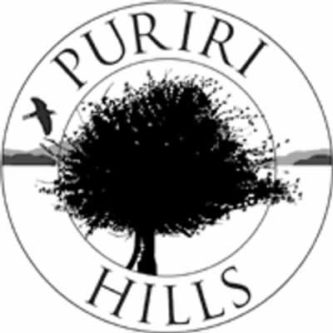 Red wines in New Zealand, like whites, are all too often released early and consumed early, meaning there are few older vintages available to purchase and enjoy. There are relatively few wine collectors and fine dining restaurants with cellars and mature stocks of New Zealand wine and thus some wineries are starting to take responsibility for ageing their wines until they approach their drinking window. Judy Fowler, owner of Puriri Hills Vineyard in Clevedon, Auckland, which specialises in Bordeaux blends, has a Brunello di Montalcino approach to releasing her reds. “My late release policy is based on the fact that we attempt to produce Bordeaux-blended wines made in the longstanding traditions of Bordeaux. The great Bordeaux generally benefit from ageing five to 10 years or longer. Our wines are built to age well. However, we are a small, newer vineyard [established 1998] with perhaps another 300 years to earn the reputation for quality that the grands crus of Bordeaux have. As such, we do not expect our customers all to want to wait for five or more years to taste our wines at their best, so we do the ageing here at the vineyard before release.” While Fowler is not alone, most wineries don’t apply the release-when-ready-to-drink policy across the entire range, as it can leave suppliers wine-less and raise the prospect of delisting.
Red wines in New Zealand, like whites, are all too often released early and consumed early, meaning there are few older vintages available to purchase and enjoy. There are relatively few wine collectors and fine dining restaurants with cellars and mature stocks of New Zealand wine and thus some wineries are starting to take responsibility for ageing their wines until they approach their drinking window. Judy Fowler, owner of Puriri Hills Vineyard in Clevedon, Auckland, which specialises in Bordeaux blends, has a Brunello di Montalcino approach to releasing her reds. “My late release policy is based on the fact that we attempt to produce Bordeaux-blended wines made in the longstanding traditions of Bordeaux. The great Bordeaux generally benefit from ageing five to 10 years or longer. Our wines are built to age well. However, we are a small, newer vineyard [established 1998] with perhaps another 300 years to earn the reputation for quality that the grands crus of Bordeaux have. As such, we do not expect our customers all to want to wait for five or more years to taste our wines at their best, so we do the ageing here at the vineyard before release.” While Fowler is not alone, most wineries don’t apply the release-when-ready-to-drink policy across the entire range, as it can leave suppliers wine-less and raise the prospect of delisting.
It is difficult to judge the ageability of New Zealand wines with so little precedent. In the past decade, young vines have matured, viticulture has evolved, winemaking has become more refined: a Pinot Noir produced 10 years ago from young vines by winemakers that were still getting to know their site will be quite different today than a current vintage opened in a decade’s time. When asked to provide drinking windows for a recent Central Otago Pinot Noir or Hawke’s Bay Cabernet Sauvignon, it is a case of pinning the tail on the donkey.
However, there’s no doubting the country’s best wines have the components to age gracefully: intensity of fruit, richness of ripe tannins, acidity (and pH), alcohol and magic all play their part in the development of a red wine. In whites, high levels of acidity and flavour precursors elongate their shelf life.
There’s also a small matter of the closure: screwcaps are omnipotent in New Zealand. Although a small but significant number of producers continue to seal their top Bordeaux blends under cork (while putting the rest of their range under screwcap), it is likely that the wines will age more slowly, because of the lower rate of oxygen ingress compared with a natural cork.
What is clear, is that far too many New Zealand wines are being consumed before they are out of nappies. It’s time to let them grow up.
Less than two months now, so thoughts turn toward?
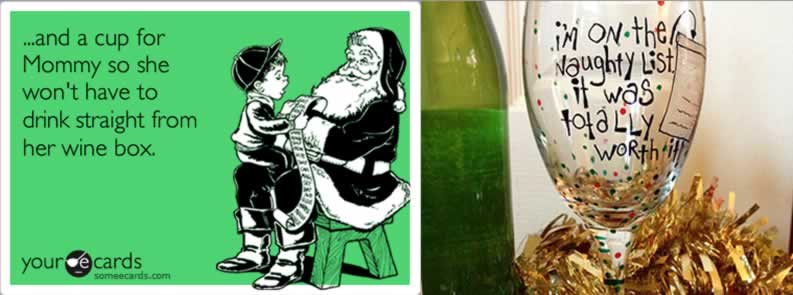
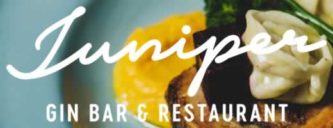 We discussed this with members a little earlier in the year and have made the decision to opt for a Saturday for the December Dinner this year.
We discussed this with members a little earlier in the year and have made the decision to opt for a Saturday for the December Dinner this year.
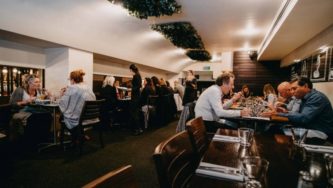 We believe that this will be convenient for most members. So we are off to Juniper, corner Featherston and Johnston Streets in the CBD for this year’s dinner.
We believe that this will be convenient for most members. So we are off to Juniper, corner Featherston and Johnston Streets in the CBD for this year’s dinner.
We are working on final details for the menu and pricing. Wayne will supply members with a combined “payment advice’ form before the November tasting. So forget about second Wednesday of the month this time and put 8 December into your diaries.
We are sure it will be a great event. As I say, more detail from Wayne shortly.
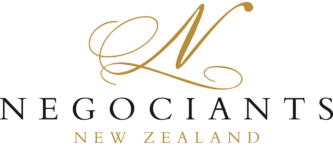 This was a very enjoyable tasting. Cenna was a very knowledgeable presenter with a great relaxed style. She admitted to a few nerves to start with but was soon interacting nicely with the members. The wines presented were great wines at a good value for money. The tasting was a good night.
This was a very enjoyable tasting. Cenna was a very knowledgeable presenter with a great relaxed style. She admitted to a few nerves to start with but was soon interacting nicely with the members. The wines presented were great wines at a good value for money. The tasting was a good night.
Whilst we haven’t used Negociants before, the fact that we are now licensed means we can deal with this type of operation in the future. We will keep it in mind to pencil Negociants in for another tasting soon, as they have a really good provider base.
To reiterate, the wines tasted were the:
Follow up on messages from last month
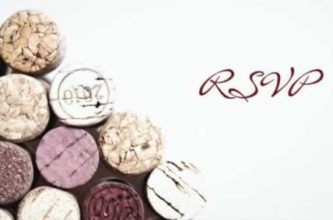 I raised the issue of letting the committee know of your intentions when it came to tastings involving the preparation of food to enhance your tasting experience. Clearly, you will already have noticed that we are seeking your assistance with this again for the November tasting. Grateful if you can let Richard know if you will be attending.
I raised the issue of letting the committee know of your intentions when it came to tastings involving the preparation of food to enhance your tasting experience. Clearly, you will already have noticed that we are seeking your assistance with this again for the November tasting. Grateful if you can let Richard know if you will be attending.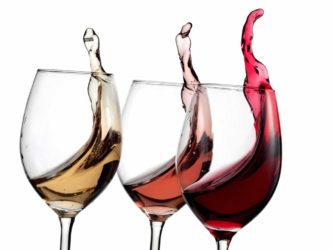 We have had a great reaction to our request for members to take home the glasses used at Club tastings for those attending who do not have their own. We have about 5 names already and would like to thank those that have offered. Would love to have more names however so please let us know if you can assist. We are arranging the purchase of a container which will fit about 16 glasses. This should make the task of carrying and cleaning very manageable.
We have had a great reaction to our request for members to take home the glasses used at Club tastings for those attending who do not have their own. We have about 5 names already and would like to thank those that have offered. Would love to have more names however so please let us know if you can assist. We are arranging the purchase of a container which will fit about 16 glasses. This should make the task of carrying and cleaning very manageable.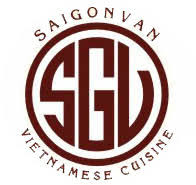 Negotiations with Saigon Van Grill Bar over some level of compensation concerning the July dinner seem to have stalled and we are not hopeful of getting a result for members. If this situation changes we will let you know but we are not holding our collective breaths.
Negotiations with Saigon Van Grill Bar over some level of compensation concerning the July dinner seem to have stalled and we are not hopeful of getting a result for members. If this situation changes we will let you know but we are not holding our collective breaths.For goodness sake, surely it can’t be November already.
Cheers
Robin Semmens
Editor
By Jordan McOnie | August 31st, 2015
Orsini’s was a benchmark for fine dining not only in Wellington but throughout the nation. Littlejohn brought together the best of restaurant history from white-gloved waiters in dinner suits and silver candlesticks to serving celebrities and surviving the 1918-1989 Liquor Law. The history and story of Orsini’s is a gem in the crown of Cuba Street Character.
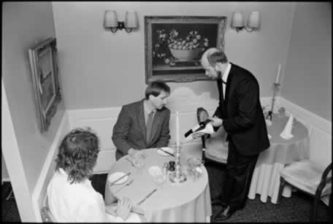
Tradition meant that the front door was always locked at Orsini’s restaurant. On ringing the bell, patrons and visitors would be welcomed and ushered inside.
The restaurant was well known and we had many famous guests. Their names are recorded in our visitor’s book and include, among others, Danny Kaye and Alfred Hitchcock.
At the time of Danny Kaye’s visit to Wellington, he was a roving ambassador for the United Nations International Children’s Emergency Fund (UNICEF). He confided in us that he’d always wanted to wait on tables. After some quick tuition, he set about serving a table – until the unsuspecting diners suddenly realised the true identity of their celebrity waiter!
Orsini’s was at the forefront of the push to get liquor laws changed to allow restaurants to serve wine and liqueurs with meals. The locked door gave us the opportunity to prepare for the regular raids of the police as they tried to enforce non-drinking regulations.
Bottles were hidden and the customers protected, but there were a couple of nights when the police visited repeatedly, every hour or two, with several policemen marching through the restaurant looking for the evidence. It wasn’t good for business.
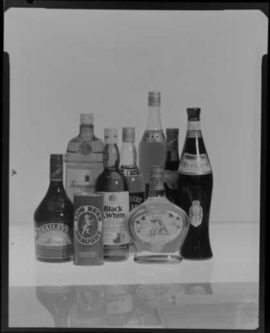
On one occasion the police returned unexpectedly and a good customer from London was caught with a glass of cognac in his hand. He gave a false name, that of Antony Armstrong-Jones, the Earl of Snowden, a well-known English photographer and the husband of Princess Margaret. Deftly we distracted the police and switched the incriminating evidence to a glass of coke, and he was spared any further repercussions.
We always looked after our customers.

 Continuing our theme of visiting the wines of established European countries, in November we will head to Portugal with Victor from Confidant Wines. Detail is still being worked on and will include some food matches to continue the celebratory theme of November tastings.
Continuing our theme of visiting the wines of established European countries, in November we will head to Portugal with Victor from Confidant Wines. Detail is still being worked on and will include some food matches to continue the celebratory theme of November tastings.
More detail next month. Suffice it to say it will be another great tasting from an established wine country.
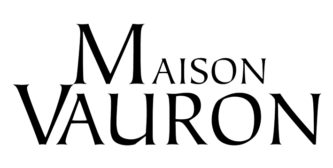 Another great meeting. This meeting of French wines with some cheese matches recorded the second highest attendance with 42 members and 2 guests attending. The meeting was characterised by both great wines with great cheese.
Another great meeting. This meeting of French wines with some cheese matches recorded the second highest attendance with 42 members and 2 guests attending. The meeting was characterised by both great wines with great cheese.
 Alex’s presentation style suited the meeting format. During the pouring of the wines, Alex chatted to various tables in turn, allowing time to taste and chat about the wines. 62 bottles were ordered from Maison Vauron with mostly 2 or 3 bottle orders. Great feedback was received from club members.
Alex’s presentation style suited the meeting format. During the pouring of the wines, Alex chatted to various tables in turn, allowing time to taste and chat about the wines. 62 bottles were ordered from Maison Vauron with mostly 2 or 3 bottle orders. Great feedback was received from club members.
The committee thanked Anne for organising this meeting and preparing the cheeses for the meeting.
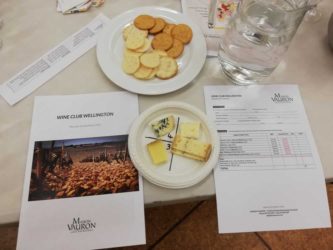 PS You may be able to purchase some of the cheeses offered at this tasting (amongst many other exotic things) from Ontrays, 38 Fitzherbert Street, Petone.
PS You may be able to purchase some of the cheeses offered at this tasting (amongst many other exotic things) from Ontrays, 38 Fitzherbert Street, Petone.